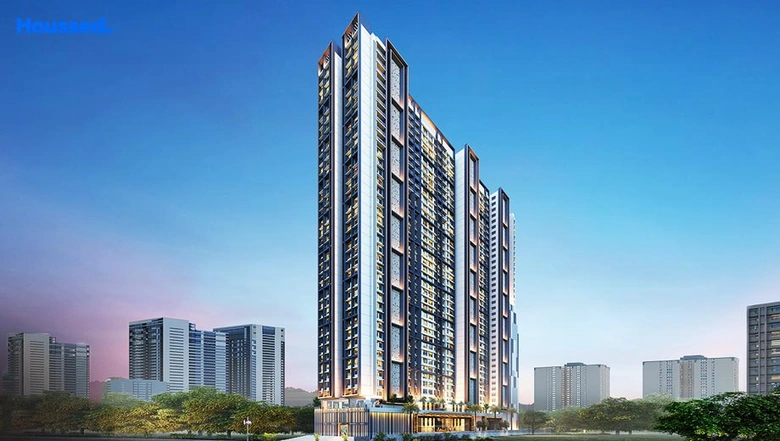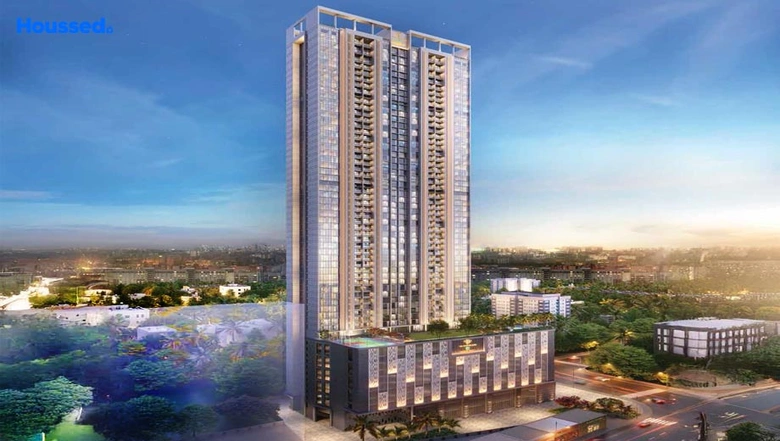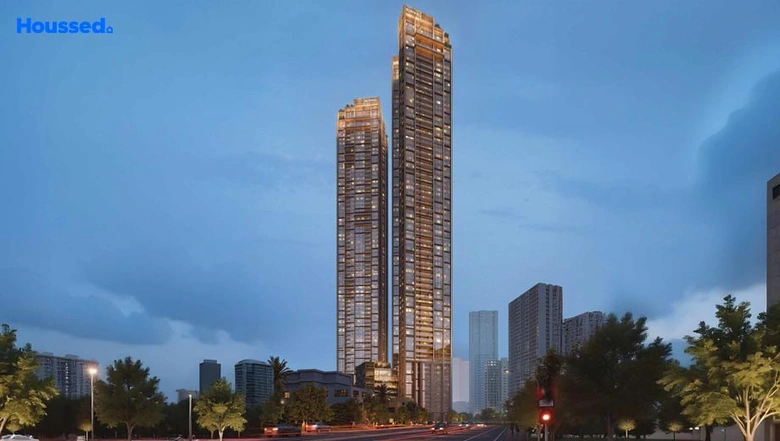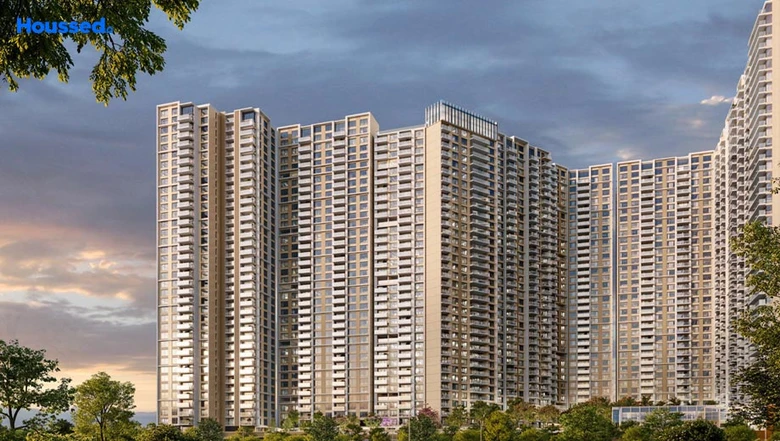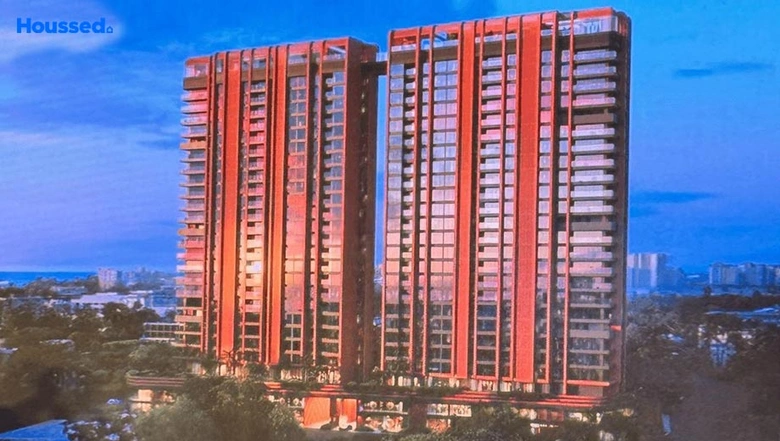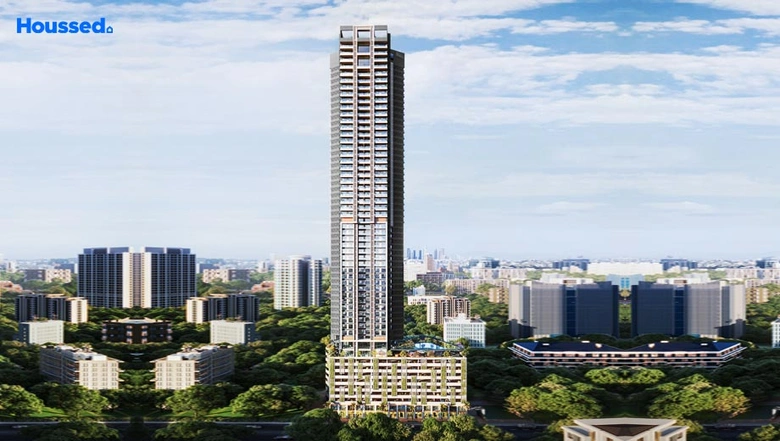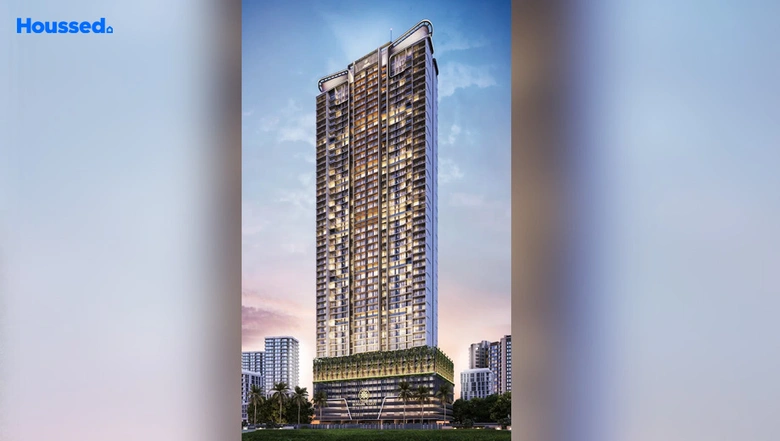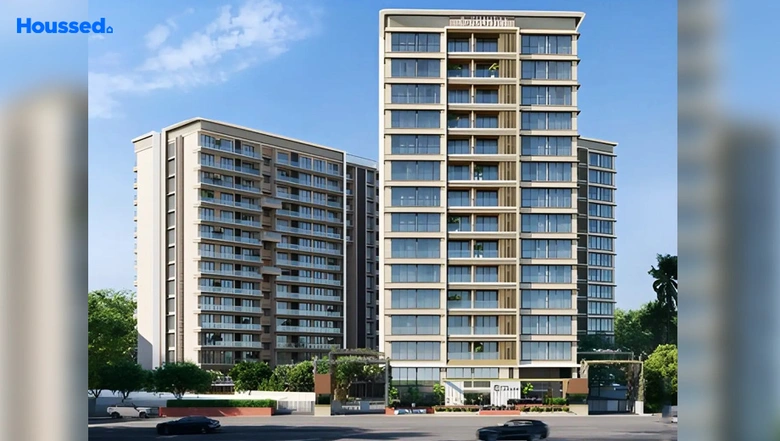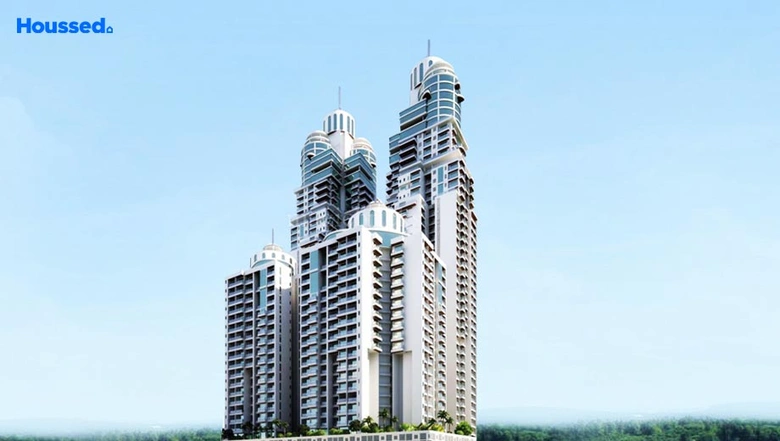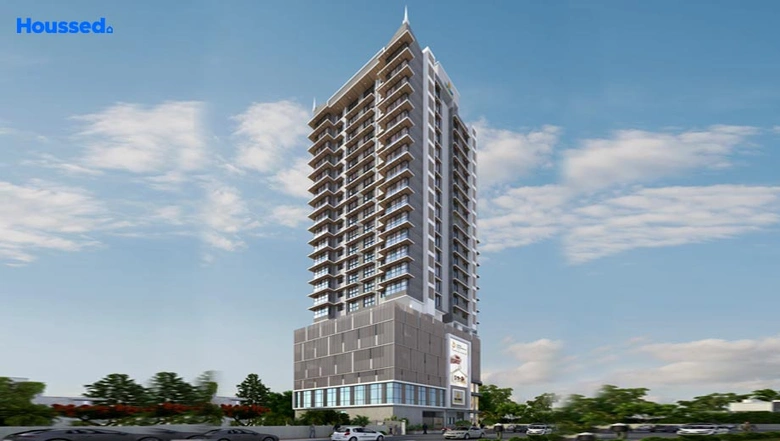Staircase as per Vastu: Shapes, Directions, Do's & Don'ts
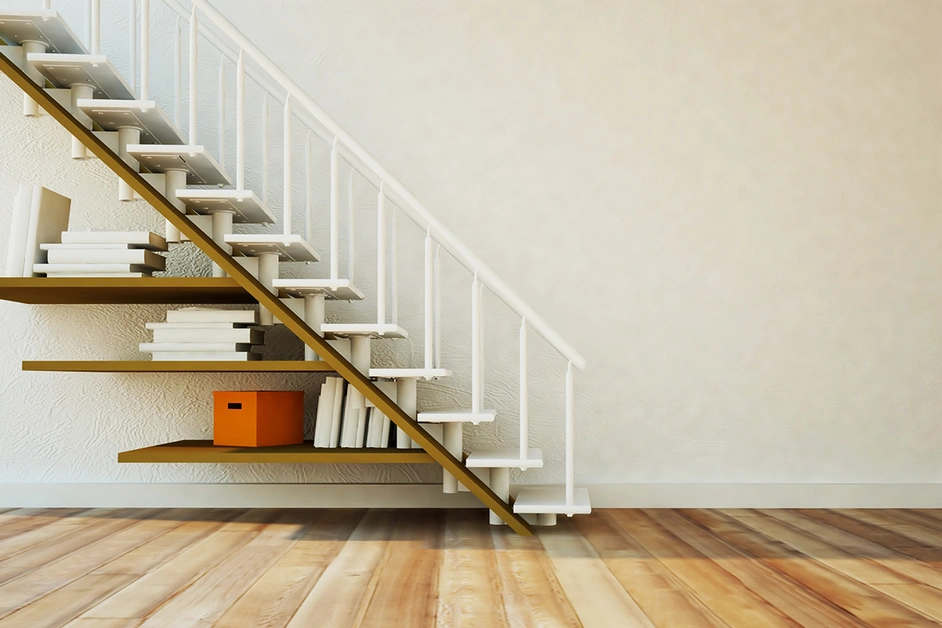
Staircases might not seem important, but they can change energy flows at home. In Vastu Shastra, staircases have a big role. They can help good vibes move around your place. This guide will explain how Vastu considers stairs and their impact on the ambience of your home.
What is the Vastu Shastra for Staircase?
When we talk about staircases, it's not just about building steps. According to Vastu Shastra, how you make and where you put the staircase matters a lot. It's not just about going up and down; it's about how good vibes move around your home.
Vastu rules for staircases are pretty interesting. They say that the Vastu direction and place of your staircase count. It's better if your staircase turns in a particular way to let positive vibes move freely. Also, where the staircase sits in your home and what it's made of are also super important. Following these rules doesn't just make your staircase look nice; it helps keep a good, happy feeling in your home for everyone who lives there.
Importance of Vastu Shastra for Staircase
The arrangement of a staircase in a home holds significance due to its impact on energy flow and inhabitants' well-being. Here are five essential aspects:
- Direction: Staircases are recommended in the west, south, or southwest areas, as per Vastu, to facilitate upward movement and stability.
- Design & Shape: A staircase should spiral clockwise and have a regular shape to ensure smooth energy flow and stability.
- Materials & Colours: Wooden or marble stairs are favoured, and light shades or natural colours promote positivity.
- Space Beneath: Keeping the space under the staircase open helps maintain positive energy flow.
- Safety & Well-being: A well-lit, clutter-free staircase ensures safety and supports overall well-being as per Vastu principles
A Guide to Staircase as per Vastu Shastra
In Vastu Shastra, every aspect of a home's construction is believed to influence the flow of energy within the space. One crucial element in this regard is the staircase, which is considered not only as a means of transition between different levels but also as a channel for positive or negative energies. An ideally designed staircase can contribute to the overall well-being and prosperity of the occupants. Here is a comprehensive guide to incorporating Vastu-friendly features into the design and placement of staircases in your home.
Direction:
The choice of direction for your staircase is pivotal in Vastu. East, north, or northeast-facing staircases are recommended, as these directions are believed to channel positive energy into the home. This alignment is thought to create a conducive environment for personal growth, prosperity, and overall harmony.
Position:
Placing the staircase in the southwest is considered advantageous for stability and strength in Vastu. This direction is associated with the grounding and supportive qualities of the earth element, ensuring a solid foundation for the entire house. However, caution should be exercised to avoid the Brahmasthan, the central part of the house, as it is a sensitive area that should remain undisturbed for optimal energy flow.
Shape:
Rectangular or square-shaped staircases are recommended for stability and prosperity. These shapes are thought to resonate positively with the earth's energies, providing a secure and grounded feel to the home. The balanced design contributes to a sense of order and tranquillity.
Orientation:
The orientation of the staircase is crucial in maintaining the natural flow of energy. Ascending from east to west or from north to south aligns with the magnetic forces of the Earth, enhancing the positive vibes within the home. This alignment is believed to support the occupants in their endeavours and life journeys.
Spiral Design:
Although not the primary recommendation, if a spiral staircase is chosen, its placement in the south or southwest is advised. The rationale behind this is to minimize any potential disruptions to the energy flow caused by the spiral design, ensuring a more harmonious integration with the overall Vastu principles.
Number of Steps:
Odd numbers of steps are preferred in Vastu, avoiding multiples of 3. This choice is rooted in the belief that odd numbers create a sense of balance and symmetry, contributing to the smooth flow of energy. Ensuring that the first and last steps are level further enhances the positive energy circulating through the staircase.
Right Colours:
The selection of colours for the staircase is not merely a matter of aesthetics but a consideration of the vibrational qualities associated with different hues. Light and soothing colours, such as pastels or earthy tones, are believed to promote a calming atmosphere. These colours resonate with positive energies, contributing to a serene and balanced living space.
Design:
A staircase with wide and even steps, without unnecessary curves, is considered favourable in Vastu. The rationale behind this design choice is to enhance stability and ease of movement. The evenness of the steps is believed to contribute to a sense of predictability and order in the home environment.
Decor:
Beyond its structural elements, the staircase area presents an opportunity for aesthetic enhancements that align with Vastu principles. Keeping the staircase clutter-free and adorning it with auspicious symbols or artwork can enhance the positivity in your home. Symbolic representations of prosperity, happiness, and protection can infuse the staircase area with positive vibrations.
Brahmasthan Staircase:
The Brahmasthan, being the central part of the house, is considered a sacred space that should remain undisturbed for optimal energy flow. Placing a staircase in this area could potentially disrupt the equilibrium of energies within the home. Therefore, it is advisable to avoid locating the staircase in the Brahmasthan.
External Staircase:
In instances where external staircases are part of the architectural design, their orientation becomes crucial. External staircases facing north or east are considered beneficial as they align with the positive energies of these directions. Conversely, placing external staircases in the southwest corner is discouraged, as it may introduce negative energies that could impact the overall harmony of the home.
Staircase Storage:
Utilizing the space under the staircase for storage is not only a practical solution but also aligns with Vastu principles. However, it's essential to maintain this area in an organized and clutter-free manner. A well-organized storage space under the staircase contributes to a positive and harmonious living environment.
Construction of Doors:
The construction and placement of doors near the staircase are additional considerations in Vastu. Doors should ideally open in a clockwise direction, aligning with the natural flow of energy. It's crucial to ensure that doors do not obstruct the path of the staircase, allowing for an uninterrupted flow of positive energy throughout the house.
Vastu Shastra Tips for Staircase
Staircases are considered significant as they are pathways for energy to move between different levels. Here are a few simple Vastu Shastra tips to consider:
- Direction matters: Ideally, staircases should spiral clockwise from top to bottom. This is believed to enhance positive energy flow.
- Location is key: It's recommended to avoid placing staircases in the centre of the house, as it may disrupt the flow of positive energy.
- Space and structure: Staircases should be well-lit and spacious. Avoid cramped or dark stairwells, as they could create a feeling of heaviness or restrict positive energy movement.
- Balustrades and railings: Ensure sturdy and well-maintained railings. This not only enhances safety but also contributes to a sense of stability in the house.
- Material matters: Wooden staircases are often preferred, as wood is believed to have grounding and natural energy-conducting properties.
Ideal Staircase Direction as per Vastu for Different House Directions
A staircase arrangement in a home holds significance due to its impact on energy flow and inhabitants' well-being. Here are five essential aspects:
Staircase in East-Facing House
It's recommended to have the staircase in the East or Southeast direction in an East-facing house as per Vastu. This promotes positive energy flow and aids in maintaining a balanced atmosphere within the house.
Staircase in West-Facing House
Placing the staircase in the Northwest or West direction is advised in a West-facing house as per Vastu. This positioning can help maintain a smooth flow of energy and enhance the overall ambience of the house.
Staircase in North-Facing House
Placing the staircase in the North or Northeast direction is considered auspicious for a North-facing house as per Vastu. This arrangement aids in channelling positive energies and ensuring a harmonious environment.
Staircase in South-Facing House
In a South-facing house as per Vastu, it's advisable to have the staircase in the South or Southwest direction. This positioning supports a balanced energy flow and contributes to the overall harmony of the living space.
Colours for Staircase as per Vastu Shastra
In Vastu, colours play a significant role in the energy flow within a home. The staircase is an essential element, and choosing the right Vastu colours can enhance the positive flow of energy.
Ideal Colours for Staircase:
- Earthy Tones: Think warm, neutral shades like brown, beige, or terracotta. These colours promote stability and grounding energy.
- Light Shades: Soft pastels like light blue, pale green, or subtle pink can create a serene and harmonious atmosphere.
Colours to Avoid:
- Dark and Gloomy colours: Avoid deep, dark shades like black, as they might absorb light and hinder the flow of positive energy.
- Overly Bright colours: Extremely vibrant and intense colours, like neon or bright red, can be overwhelming and disrupt the balance of energies.
Constructing Staircase as per Vastu: Do's and Don'ts
Do's:
When constructing a staircase, certain Vastu principles can be considered for better energy flow within the home.
- Location: Ideally, the staircase should be in the South, Southwest, or West direction of the house.
- Shape and Design: It's recommended to avoid circular or spiral staircases, favouring square or rectangular shapes.
- Number of Steps: Odd numbers for steps are considered auspicious in Vastu.
- Materials: Using wood or marble is favourable. Avoid using low-quality materials.
- Direction: The staircase should ascend from East to West or North to South.
- Placement: It's best to avoid positioning the staircase in the centre of the house to maintain the positive energy flow.
- Lighting: Ensure proper lighting, especially at the top and bottom of the staircase
Don'ts:
When constructing a staircase, according to Vastu, it's believed that the energy flow in a home can be affected. To align with Vastu principles, here are some things to avoid:
- Avoid Circular or Spiral Staircase: Vastu suggests using straight or square-shaped stairs to ensure smooth energy flow.
- Avoid Odd Number of Steps: Try to have an even number of steps to maintain balance and harmony in the house.
- Avoid Creaky or Broken Steps: Stairs should be in good condition to prevent negative energy accumulation.
- Avoid Stairs Facing the Main Entrance: Stairs facing the entrance can lead to energy loss, according to Vastu principles.
- Avoid Clutter Under the Stairs: Keep the space under the stairs clean and clutter-free to allow positive energy to circulate freely.
- No Direct View: The staircase shouldn't be directly visible from the main entrance.
Staircase Vastu Doshas
Vastu Shastra suggests several guidelines to ensure positive energy flow in a home, including considerations for staircases. Here are some common Vastu Doshas related to staircases:
- Direction: Staircases should ideally be in the South, West, or Southwest part of the house.
- Shape and Position: Avoid circular, spiral, or irregularly shaped staircases. They should not be in the centre of the house or too close to the main entrance.
- Number of Steps: Even numbers of steps are preferred, and odd numbers should be avoided.
- Construction: Stairs should be built in a clockwise direction and shouldn't creak or be broken.
- Storage: Avoid keeping heavy items or clutter under the staircase; instead, keep it clean and well-lit.
- Lighting: Ensure proper lighting on the staircase for safety and positive energy flow.
Remedies for Staircase Vastu Doshas
- Keep Stairs Well-Lit: Ensure good lighting on the staircase to dispel negative energy and promote a positive ambience.
- Avoid Broken or Creaky Steps: Promptly repair any broken or creaky steps, as damaged stairs are believed to bring obstacles and hindrances.
- Decorate with Positive Symbols: Adorn the staircase area with symbols of positivity, like potted plants or vibrant artwork, to counteract negative energy.
- Use Colors Wisely: Choose light and soothing colours for staircase walls to enhance a sense of calmness and balance in the home.
- Install Handrails for Support: Ensure sturdy handrails are in place for support and stability, promoting a secure and confident energy flow.
- Avoid Clutter on Stairs: Keep the staircase clutter-free, as a tidy space encourages the smooth flow of energy up and down.
- Place Crystals Strategically: Position crystals like amethyst or clear quartz on the staircase to counteract negative vibrations and invite positivity.
- Hang Positive Affirmations: Decorate the stairwell with positive affirmations or motivational quotes to uplift the energy in the space.
- Regular Cleansing Rituals: Engage in regular cleansing rituals like smudging with sage or using salt water to purify the staircase area.
- Introduce Greenery: Place indoor plants on the staircase landing to bring in natural vitality and counteract any negative influences
Different Staircase Shapes as per Vastu
In Vastu, the shape of your staircase plays a significant role in channelling energy within your home. Each staircase type brings a unique energy flow, impacting the overall harmony of your living space.
Winder Staircase
A Winder Staircase, curving or turning, should ideally ascend clockwise. Vastu suggests this shape promotes a smooth flow of energy, preventing any disruptions or stagnation as you ascend or descend.
Circular/Spiral Staircase
Circular or Spiral Staircases, with their graceful curves, should rotate in a clockwise direction for positive energy circulation. This shape symbolizes continuity and balance in your home's energetic dynamics.
Straight Flight Staircase
A Straight Flight Staircase, a simple and direct ascent, aligns with Vastu principles when it faces either the north or east direction. This placement encourages an unobstructed flow of energy.
U-Shaped Staircase
A U-Shaped Staircase, bending in the middle, is recommended to be constructed in a clockwise direction. This design fosters a harmonious and balanced energy flow within the space.
L-Shaped Dog-Legged Staircase
An L-Shaped Dog-Legged Staircase, forming a right angle, should ascend in a clockwise direction. Vastu suggests that this shape aids in maintaining a stable and positive energy environment in your home.
Conclusion
This comprehensive guide tells you how to place and build stairs to make your home feel good. It talks about which direction stairs should go, how they should look, and what materials to use. Following these ideas can make your home a more peaceful and happy place, according to Vastu's beliefs.
What is the Vastu Shastra for Staircase?
Vastu emphasizes the direction and placement of staircases to enhance positive energy flow within a home.
Importance of Vastu Shastra for Staircase
The positioning and design of staircases significantly impact energy flow and inhabitants' well-being, focusing on direction, shape, materials, space utilization, safety, and well-being.
A Guide to Staircase as per Vastu Shastra
Vastu principles dictate the ideal direction, position, shape, and design for staircases to ensure positive energy flow.
Some Vastu Shastra Tips for Staircase
Guidelines include clockwise spiralling, avoiding central placement, ensuring ample space and lighting, and using sturdy materials like wood for positive energy enhancement.
Ideal Staircase Direction as per Vastu for Different House Directions
Vastu guidance for different house facings recommends specific directions for staircase placement to maintain a balanced energy flow within the home.
Things to Keep in Mind While Constructing the Staircase as per Vastu
Key considerations involve location, shape, step count, materials, direction, and placement to ensure the optimal flow of positive energy.
Things to Avoid While Constructing The Staircase as per Vastu
Avoid circular or spiral designs, odd step counts, creaky steps, stairs facing the entrance, and clutter under the stairs to maintain positive energy circulation.
Colours for Staircase as per Vastu Shastra
Choosing ideal colours such as warm earthy tones or light pastels can significantly impact the positive flow of energy within a house.
Staircase as per Vastu: Do's and Don'ts
Following and avoiding specific practices, including favourable placement, material use, step count, lighting, and shape, contribute to positive energy alignment.
Staircase Vastu Doshas
Vastu Doshas includes identifying unfavourable positions and shapes for staircases as per Vastu principles that disrupt the flow of positive energy.
Remedies for Staircase Vastu Doshas
Suggestions to rectify Vastu Doshas include enhancing lighting, ensuring even and well-maintained steps, and utilizing space for positive energy circulation.
Shapes
Vastu emphasizes staircase shapes like Winder Staircase, Circular/Spiral Staircases, U-Shaped, and L-Shaped Dog-Legged, for energy flow, known to maintain stability in home energy.
FAQ's
Staircases are recommended in the south, southwest, or west directions.
- Put the stairs in the south, southwest, or west direction.
- Make sure they have a regular shape, like straight or square, without twists or turns.
- Avoid having an odd number of steps.
- Use materials like wood, marble, or granite for the stairs.
- Have good lighting, especially at the top of the stairs.
A staircase's direction affects energy flow; correct placement ensures harmony.
Ideally, staircases face south, southwest, west, or southeast for positive energy flow.
For Vastu, the staircase should face south, southwest, or west. Avoid putting it in the center or northeast of the house, as that might disturb the energy flow.
For a north-facing house, the staircase can be in the west, north, or northwest.
The staircase is recommended in the south, west, or northwest for a west-facing house.
There's no specific recommendation for the number of steps in Vastu for staircases.
Light or pastel shades are ideal for staircases, promoting a sense of space and tranquility.
Avoid dark or dull colours; they may hinder positive energy flow in the house.
When constructing a staircase following Vastu guidelines, put it in the south, west, or southwest. Make sure it goes in a clockwise direction, doesn't have odd steps, is well-lit, stable, and has a regular shape.
Do’s: Ensure the staircase isn't directly visible from the main door to prevent energy loss.
Don’ts: Avoid circular or spiral staircases; they disrupt energy flow.
Staircases facing east or in the center of the house are considered Vastu doshas.
Placing plants or lights at the top and bottom of the staircase can rectify Vastu doshas.
Straight or square-shaped staircases are recommended in Vastu Shastra for better energy flow.
